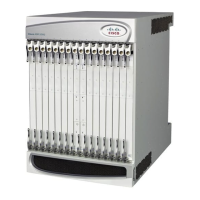Enhanced Charging Service Overview
Cisco ASR 5000 Series Product Overview ▄
File Transfer Protocol (FTP)
Hyper Text Transfer Protocol (HTTP)
Internet Control Message Protocol (ICMP)
Internet Control Message Protocol version 6 (ICMPv6)
Internet Message Access Protocol (IMAP)
Internet Protocol version 4 (IPv4)
Internet Protocol version 6 (IPv6)
Multimedia Messaging Service (MMS)
Post Office Protocol version 3 (POP3)
RTP Control Protocol/Real-time Transport Control Protocol (RTCP)
Real-time Transport Protocol (RTP)
Real Time Streaming Protocol (RTSP)
Session Description Protocol (SDP)
Secure-HTTP (S-HTTP)
Session Initiation Protocol (SIP)
Simple Mail Transfer Protocol (SMTP)
Transmission Control Protocol (TCP)
User Datagram Protocol (UDP)
Wireless Session Protocol (WSP)
Wireless Transaction Protocol (WTP)
File analysis: Examination of downloaded file characteristics (for example, file size, chunks transferred, etc.)
from file transfer protocols such as HTTP and FTP
Shallow Packet Inspection
Shallow packet inspection is defined as inspection of the layer 3 (IP header) and layer 4 (for example, UDP or TCP
header) information in the user plane packet flow.
Shallow inspection is examining the IP header (Layer 3) or UDP or TCP header (Layer 4). Deep-packet inspection is
typically the examination of Uniform Resource Identifier (URI) information (Layer 7). Shallow packet analyzers
typically determine the destination IP address or port number of a terminating proxy, whereas deep-packet analyzers
typically identify the destination of a terminating proxy.
Deep Packet Inspection
In some cases, Layer 3 and 4 analyzers that identify a trigger condition are insufficient for billing purposes, so layer 7 is
used.
For example, the Web site www.companyname.com corresponds to IP address 1.1.1.1. The stock quote page
(www.companyname.com/quotes) and the company page (www.companyname.com/business) are chargeable services.

